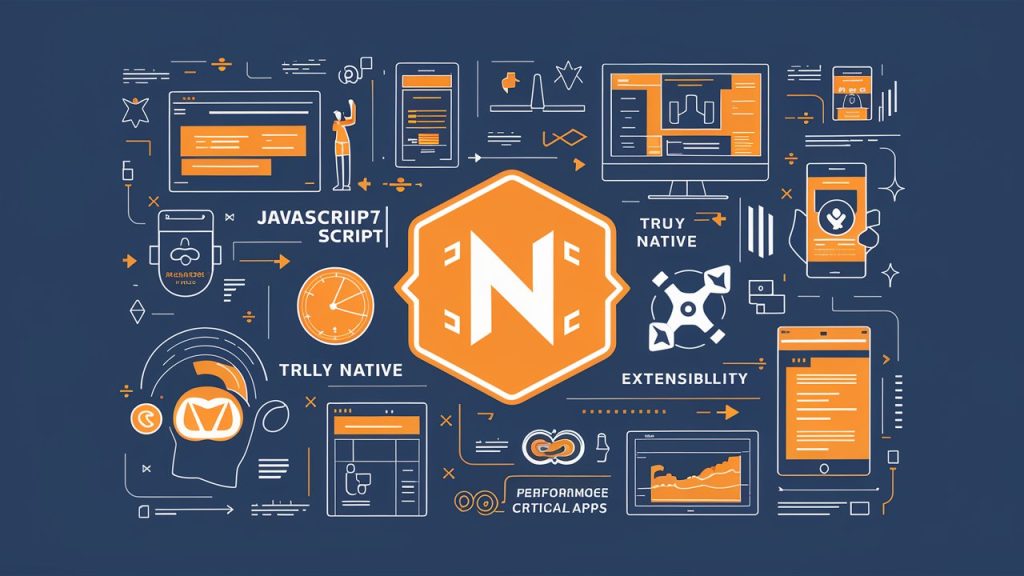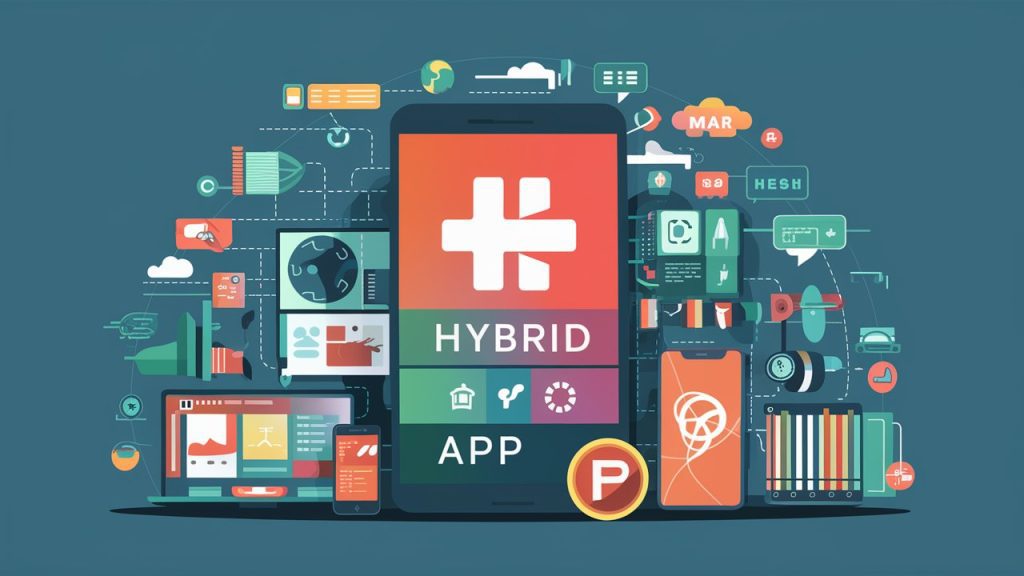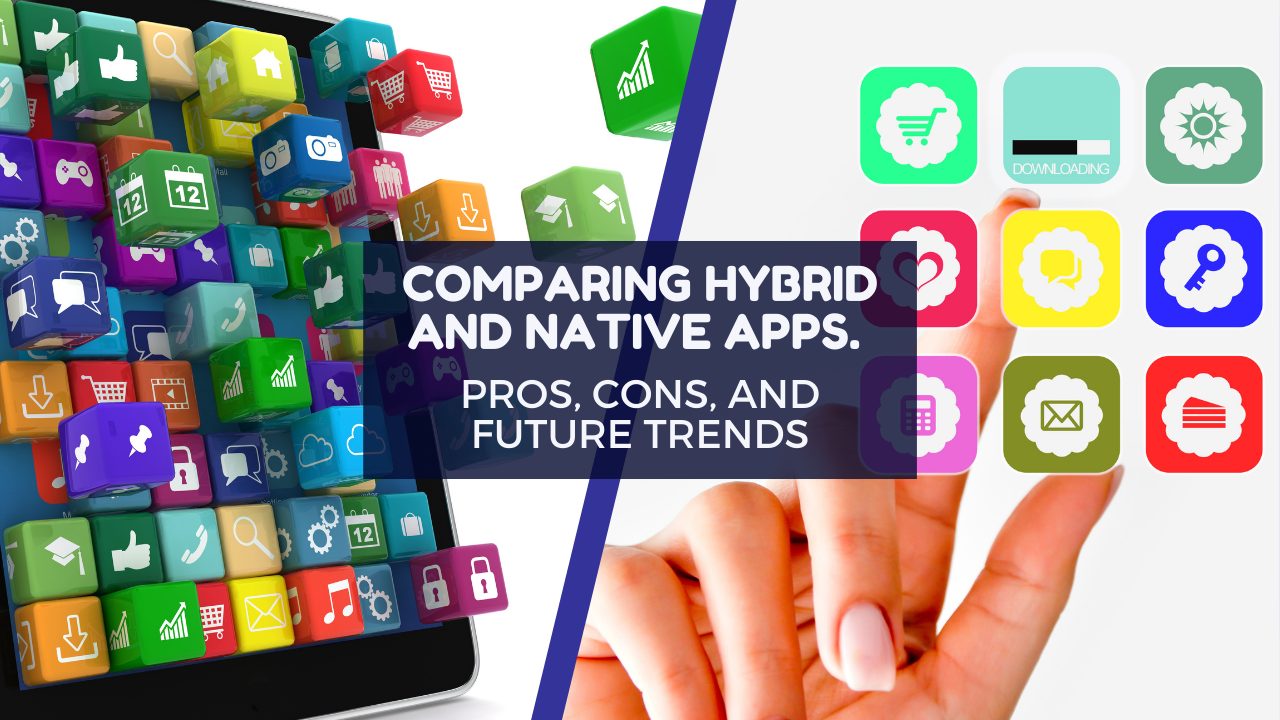Developers and businesses often face a crucial decision when creating mobile applications: should they opt for hybrid apps or native apps? This choice significantly impacts the app’s performance, user experience, and development process. Comparing hybrid and native apps provides valuable insights into their respective strengths and weaknesses, helping businesses make informed decisions for their unique needs.
What are Native Apps?

Native apps are designed and developed specifically for a particular platform, such as iOS or Android, using platform-specific programming languages like Swift for iOS and Kotlin for Android. Because they are built to integrate seamlessly with the operating system, native apps offer unparalleled performance and a highly optimized user experience.
One of the main advantages of native apps is their ability to utilize device-specific features, such as GPS, cameras, and notifications, with unmatched efficiency. Additionally, their superior performance and responsiveness make them ideal for high-intensity applications like gaming and multimedia. However, developing native apps can be resource-intensive. Separate apps must be built for each platform, requiring distinct codebases and often leading to higher development and maintenance costs. Furthermore, native app updates must be approved through app stores, which can delay feature rollouts.
What are Hybrid Apps?
Hybrid apps, on the other hand, combine elements of both native and web technologies. Built using frameworks like React Native or Ionic, they use a single codebase to deploy across multiple platforms. This approach makes hybrid apps cost-effective and faster to develop compared to native apps.
The key advantage of hybrid apps lies in their cross-platform compatibility. Developers can write the code once and deploy it on multiple platforms, significantly reducing development time and costs. However, this convenience often comes at the expense of performance. Hybrid apps rely on a web view to render content, which may result in slower response times and limited access to certain device features. Despite these limitations, hybrid apps are ideal for simpler applications or when speed-to-market is a priority.
Comparing Performance – Comparing Hybrid and Native Apps

Performance is often a decisive factor when comparing hybrid and native apps. Native apps deliver superior speed and responsiveness because they are specifically optimized for the platform they are built for. Tasks such as animations, complex calculations, and real-time updates run more smoothly on native apps.
In contrast, hybrid apps may struggle with intensive tasks due to their reliance on a web view. While frameworks like React Native have significantly improved hybrid app performance, they still lag behind native apps in terms of responsiveness and smoothness. Businesses that prioritize seamless performance often lean towards native app development, particularly for demanding applications. Dive deeper into our [blog posts] for in-depth insights and examples.
User Experience and Interface – Comparing Hybrid and Native Apps
Native apps have a clear advantage when it comes to user experience (UX) and interface design. Since they are built with the platform’s guidelines in mind, native apps provide a more intuitive and visually appealing experience. This consistency fosters user trust and engagement.
Hybrid apps, while improving in UX capabilities, often fall short in delivering the same level of polish. The single codebase approach means they may not fully conform to platform-specific design standards, leading to a less cohesive experience. However, for businesses targeting multiple platforms quickly, hybrid apps still provide a viable solution.
Development and Maintenance Costs – Comparing Hybrid and Native Apps

When evaluating costs, comparing hybrid and native apps reveals stark differences. Native app development requires creating separate codebases for each platform, which increases both initial development costs and ongoing maintenance expenses. Each update or bug fix must be implemented individually for iOS and Android versions.
Hybrid apps, with their single codebase, offer substantial cost savings. Maintenance is streamlined since updates apply universally across platforms. For startups or businesses with limited budgets, hybrid apps provide a cost-effective entry point into the app market without compromising on functionality.
Access to Device Features – Comparing Hybrid and Native Apps
Native apps excel in leveraging device-specific features. Whether it’s accessing sensors, cameras, or push notifications, native apps can do so with precision and efficiency. This makes them the go-to choice for applications requiring advanced hardware integration.
Hybrid apps, while capable of accessing some device features, often require third-party plugins to bridge the gap. These plugins may not always support the latest device features, limiting the app’s capabilities. For businesses relying heavily on cutting-edge hardware functionality, native apps remain the preferred option.
Security Considerations – Comparing Hybrid and Native Apps

Security is a critical concern for any mobile application. Native apps benefit from robust platform-specific security features, ensuring user data is well-protected. These apps can also implement additional layers of security, such as biometric authentication, with greater ease.
Hybrid apps, while improving in security, face challenges due to their reliance on web technologies. Vulnerabilities in plugins or frameworks can expose hybrid apps to potential threats. Developers must exercise caution and adopt stringent security measures to mitigate these risks, especially for applications handling sensitive information.
Future Trends
The future of mobile app development sees hybrid and native apps evolving in parallel. Advances in frameworks like Flutter and React Native are narrowing the performance gap, making hybrid apps increasingly viable for more complex applications. Meanwhile, native apps continue to push the boundaries of performance and user experience, particularly with the integration of 5G and AI-driven functionalities.
Businesses must stay informed about these trends and choose the approach that aligns with their objectives. Whether prioritizing cost efficiency or aiming for unparalleled performance, the choice between hybrid and native apps will depend on specific project requirements and audience needs.
Conclusion
Comparing hybrid and native apps highlights the unique strengths and weaknesses of each approach. Native apps stand out in performance, user experience, and hardware integration, making them ideal for high-demand applications. On the other hand, hybrid apps offer cost-effectiveness, faster development, and cross-platform compatibility, making them suitable for broader audiences and quicker deployment.
As technology advances, both hybrid and native apps will continue to evolve, blurring the lines between them. Developers and businesses must evaluate their priorities—whether it’s delivering the most polished experience or achieving cost and time savings. Ultimately, the choice between hybrid and native apps will shape the future of mobile technology and determine the success of modern digital solutions.

